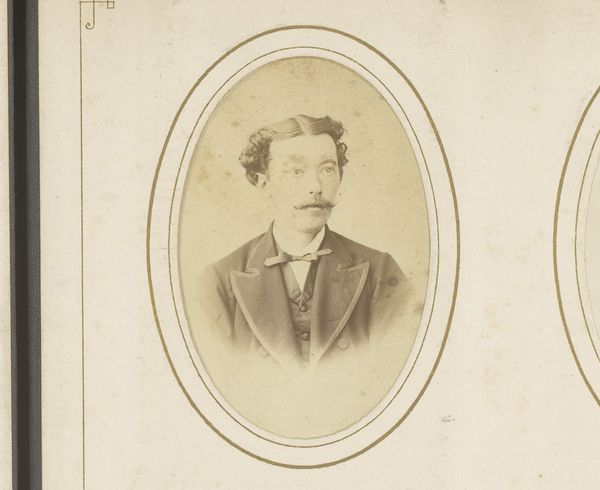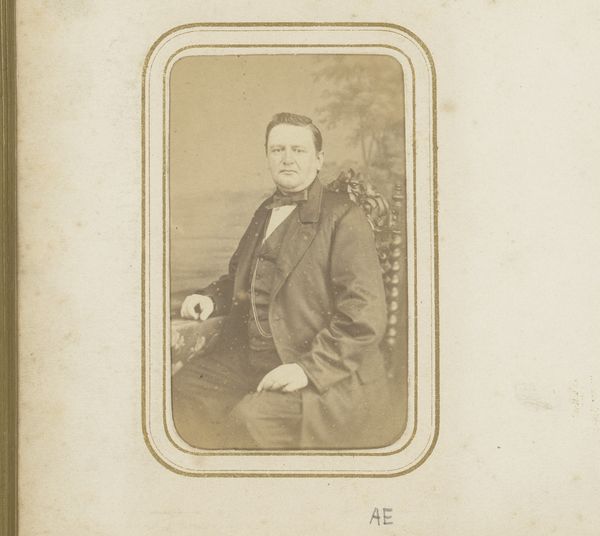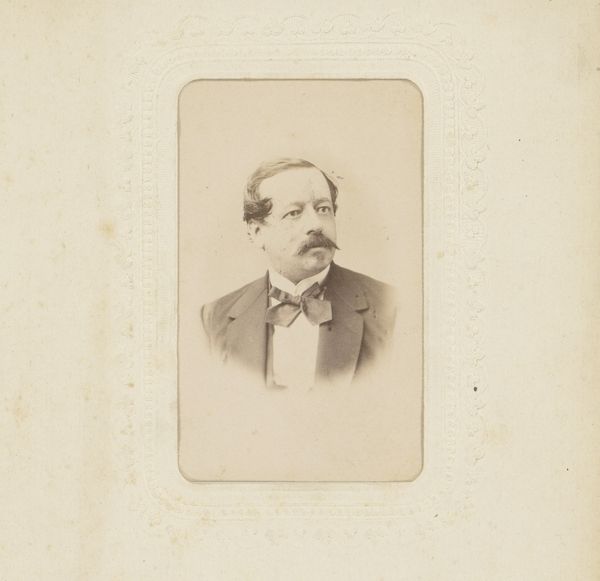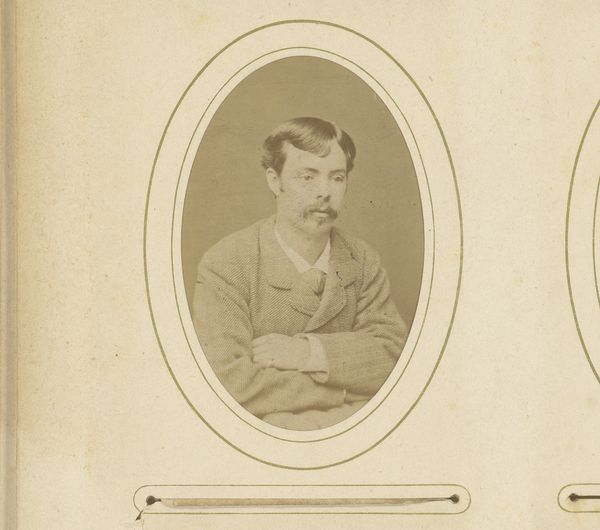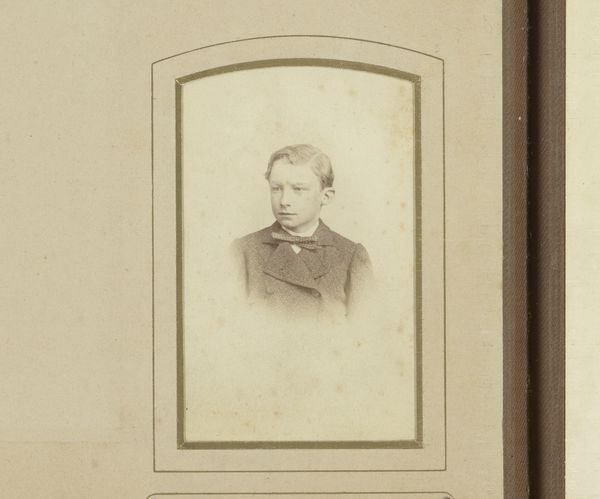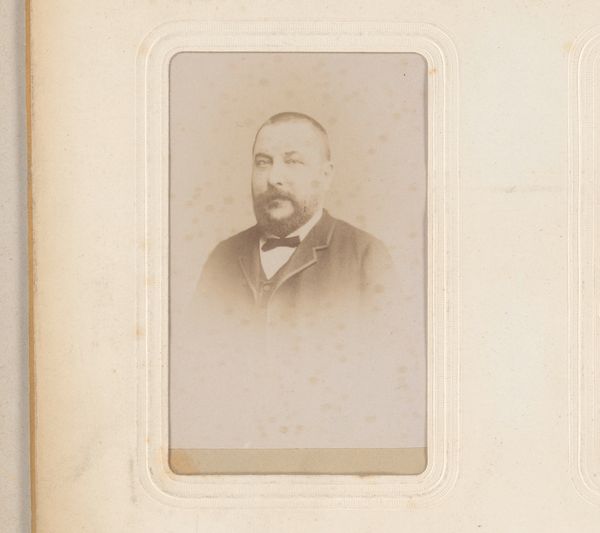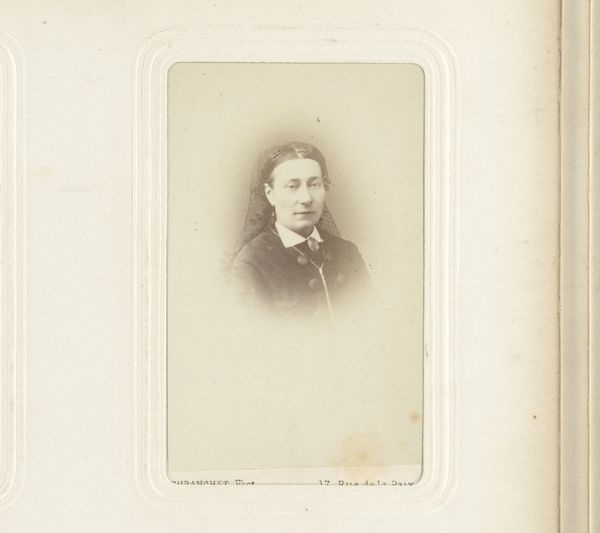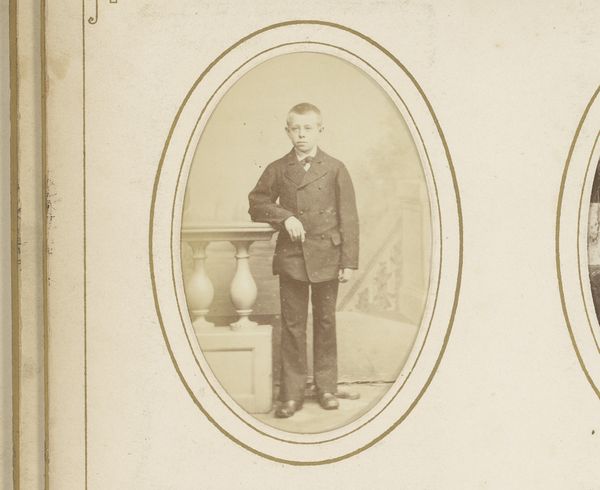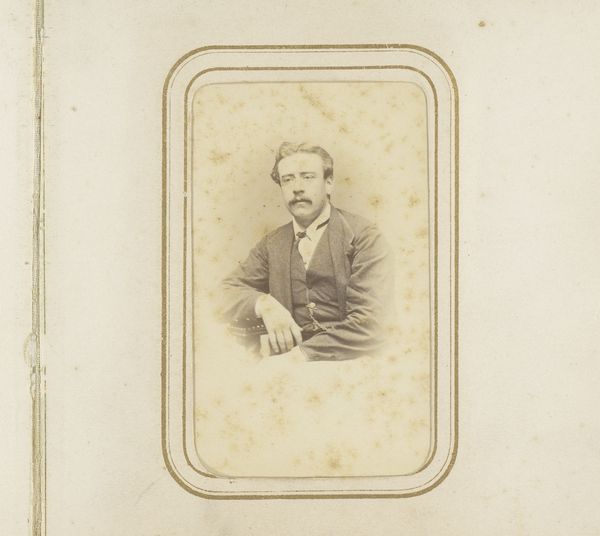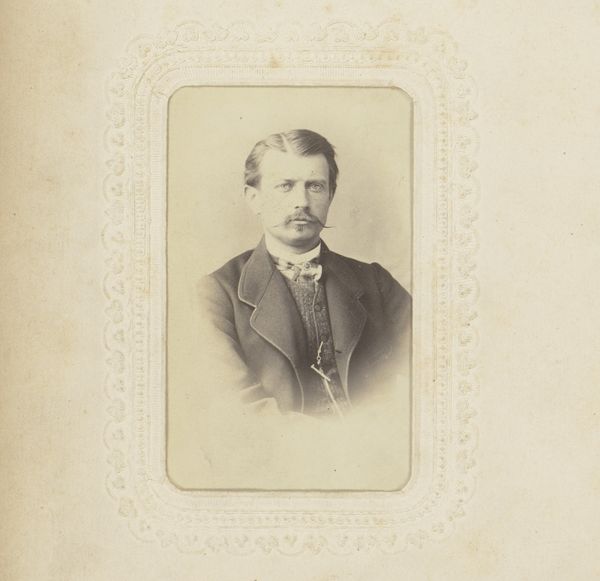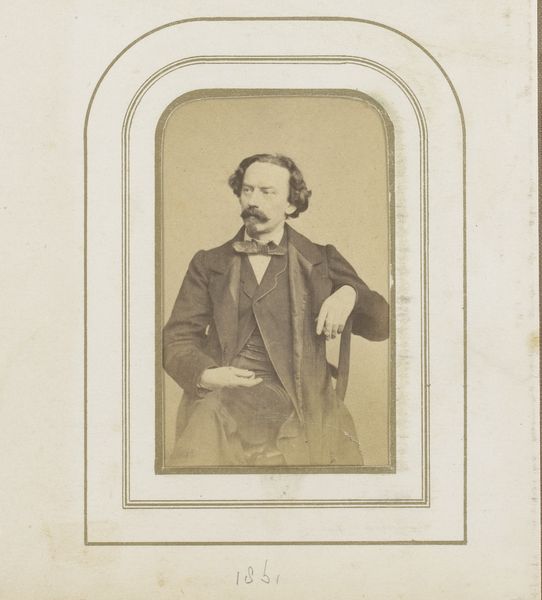
photography, gelatin-silver-print
#
portrait
#
sculpture
#
charcoal drawing
#
photography
#
historical photography
#
gelatin-silver-print
#
19th century
#
realism
Dimensions: height 85 mm, width 52 mm
Copyright: Rijks Museum: Open Domain
Curator: This gelatin-silver print, "Portret van een man, leunend op de leuning van een stoel," made sometime between 1860 and 1900 by the Yeoman Brothers, feels surprisingly intimate for a studio portrait of the era. It has a really candid feel. What grabs your attention when you look at it? Editor: It’s the texture and light that captivate me. Knowing this is a photographic print from that time, what was the typical studio process to produce a photo like this? Curator: The gelatin-silver process itself is key. Think about the labor involved – the coating of glass plates, the darkroom work, the precise timing, and the reliance on specific chemicals and equipment. This isn’t just pointing and shooting; it’s a whole industry. Did the sitter come from privilege and the laboring class? Editor: Interesting, I see your point. The detail achieved is remarkable. I wonder about the staging involved. He is posed but seems comfortable. Does this comfort reveal something about 19th century studio photography conventions? Curator: It reveals how photography began blurring the lines between fine art and craft. Was this considered "high art" or just a commercial endeavor? Who had access to such a "commodity," and what did that signify in terms of social standing? It becomes less about pure aesthetics and more about production, labor, and access. Editor: So you're saying we need to look beyond just the image itself and consider the socio-economic implications of creating and possessing such a portrait. It shifts from being just about capturing a likeness to being a marker of status. Curator: Precisely! Consider how the very act of posing –the lean, the gaze, the clothing – is a carefully constructed performance. Whose performance is it, though? Is it solely the sitter’s, or is it directed, shaped by the photographer and by societal expectations about class and gender? Editor: That really changes how I see the picture. Now I'm wondering about who produced the materials. Curator: Right! Trace it back – the silver mines, the glass factories, the chemical production. Everything connects to wider systems of labor and exchange. It brings new meaning to even a simple portrait, doesn't it? Editor: Definitely, now I am questioning where this image ends and another process starts. Thanks.
Comments
No comments
Be the first to comment and join the conversation on the ultimate creative platform.
